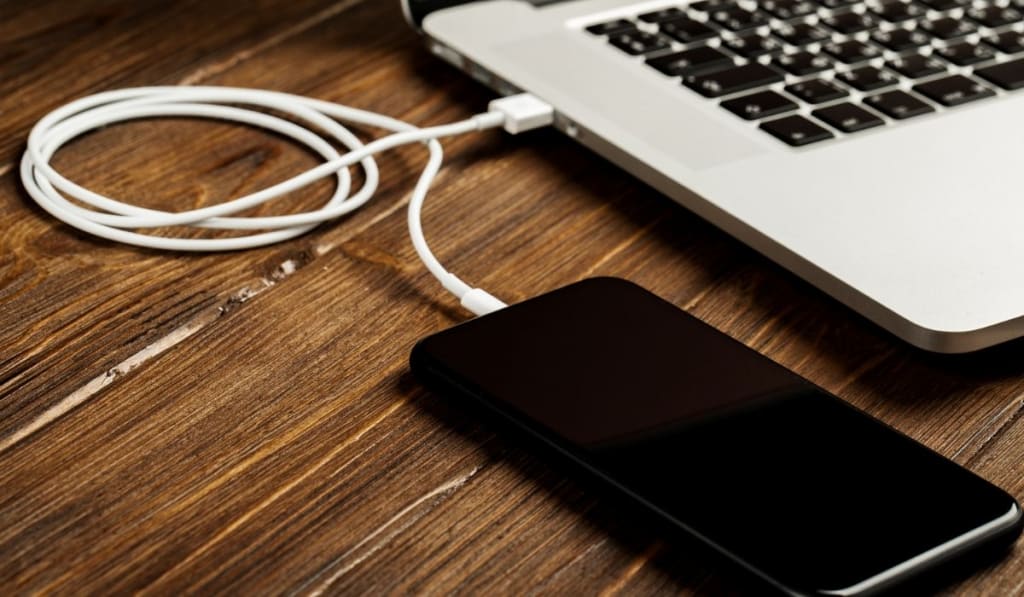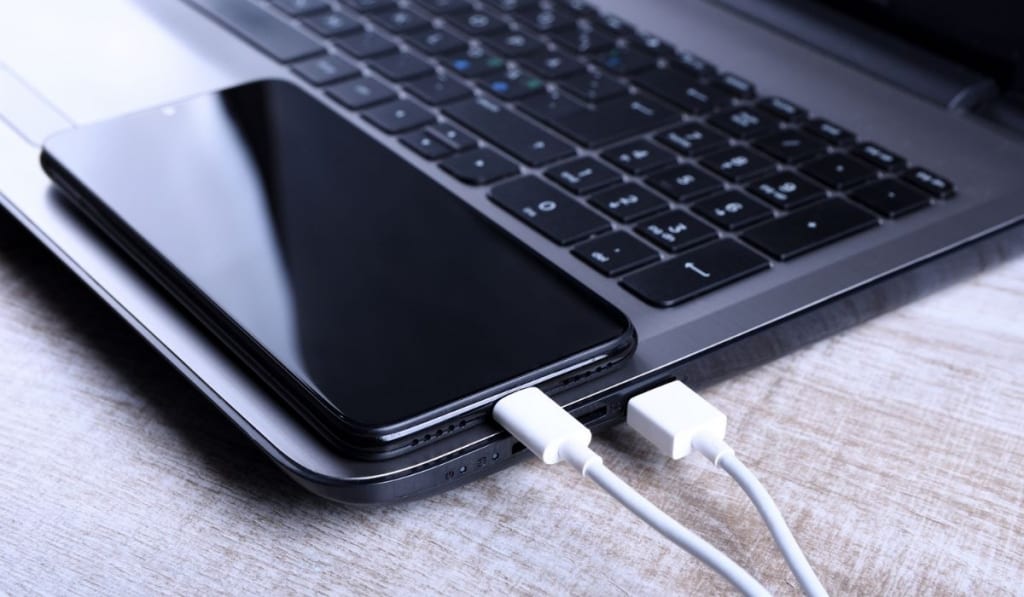What Does ‘Eject iPhone’ Mean? And How To Do It Safely
There are several reasons why you might plug an iPhone into your computer, one of which is to deal with files and processes through the iTunes App. And before you physically disconnect the iPhone from your computer, you probably know that you should hit the ‘Eject’ button. But what exactly does this button do, and why is it necessary to click it?
The ‘Eject’ button on iTunes is a way to stop any active processes between your iPhone and the computer. This ensures that no files are being transferred between the devices when you unplug the phone. If you disconnect your iPhone without hitting ‘eject,’ such files may become corrupted.
Let’s take a closer look at the ‘Eject’ button on iTunes, including what it’s there for and the potential consequences of ignoring it.
What Does ‘Eject iPhone’ Mean?

If you have your iPhone plugged into the computer, it will advise you to ‘Eject iPhone’ before you go ahead and disconnect the cable from the phone or computer itself.
This command essentially stops any interaction between the iPhone and the computer, severing any ties to make it as if the iPhone isn’t connected at all. It’s the safest way to disconnect your iPhone from your computer, since you won’t interrupt any processes if the phone has been ejected.
How to Safely Eject iPhone From Computer
If you open up iTunes and select your device at the top of the screen, you’ll see an ‘Eject’ button. It looks like a triangle with a line beneath it, and clicking this is how you disconnect your iPhone from your computer.
Make sure you no longer see the device in iTunes after you click eject. If the device has disappeared, it signals that you’ve successfully ended all processes and it’s now safe to unplug the cable.
What Happens if I Unplug an iPhone Without Ejecting Properly?
Many people have pulled the cable out of their phone, computer, or both without hitting ‘Eject’ and have faced no clear consequences as a result. So, should you do the same?
It’s certainly not guaranteed that something will go wrong if you don’t eject your iPhone before pulling the cable out — but there’s a big chance it will.
The main issue you’re likely to face is corrupted files that you can’t open later on. This could be anything, including:
- Apps
- Songs
- Photographs
- Downloaded files from the internet
- Saved settings
- Backups
The worst thing that can happen, although rare, is that the action corrupts the iOS system itself. This could cause a range of problems, from having to restore your phone to its factory settings to rendering the iPhone inoperable altogether.
This usually happens with data that is actively moving between the computer or phone. For example, if you abruptly disconnect your phone while importing pictures, those pictures could become corrupted and disappear forever.
If you’re playing a video file on your computer from your phone, then that file may be disturbed, and so on.
That doesn’t mean you’re clear to forego using the ‘Eject’ button if your computer and iPhone don’t seem to have an active ongoing process. Things can happen in the background, and it’s much safer to take those few seconds to make sure you’re doing things properly, nullifying the risk of corrupted files.
What Happens if My Files Become Corrupted?
If your files become corrupted, the only thing you can do is look for a copy of them on your computer. For example, if photos become corrupted because you were importing them to your laptop and you pulled the cable out while this process was ongoing, they may have saved to your computer and you can recover them from there.
There is also third-party software that can sometimes repair corrupted files, such as PhoneClean. Make sure to check out the reviews and verify the legitimacy of any third-party software before allowing it access to your phone.
That said, these programs can sometimes locate and clean up corrupted files to make them work again.
Unfortunately, some corrupted files can’t be recovered. That’s why it’s important to follow Apple’s recommended processes (such as properly using the ‘Eject’ button) and to make sure you back up your phone through iTunes or iCloud on a regular basis.
That way, if files ever do get corrupted, you can go back in and easily restore them.
How Do I Know the iPhone Has Been Ejected?

There are two ways you can be sure that hitting the ‘Eject’ button has worked. The first is that a confirmation sound should play through the computer’s audio, letting you know that an action has been taken.
The second is that you should no longer see the device in iTunes. To reconnect it, you’d have to disconnect the cable and plug it back in again, allowing the connection to reset.
Overall, most people who accidentally disconnect their phone before using the ‘Eject’ button don’t experience any issues. However, it’s always possible for there to be serious consequences, so it’s best to get into the habit of ensuring your iPhone is correctly ejected each time.